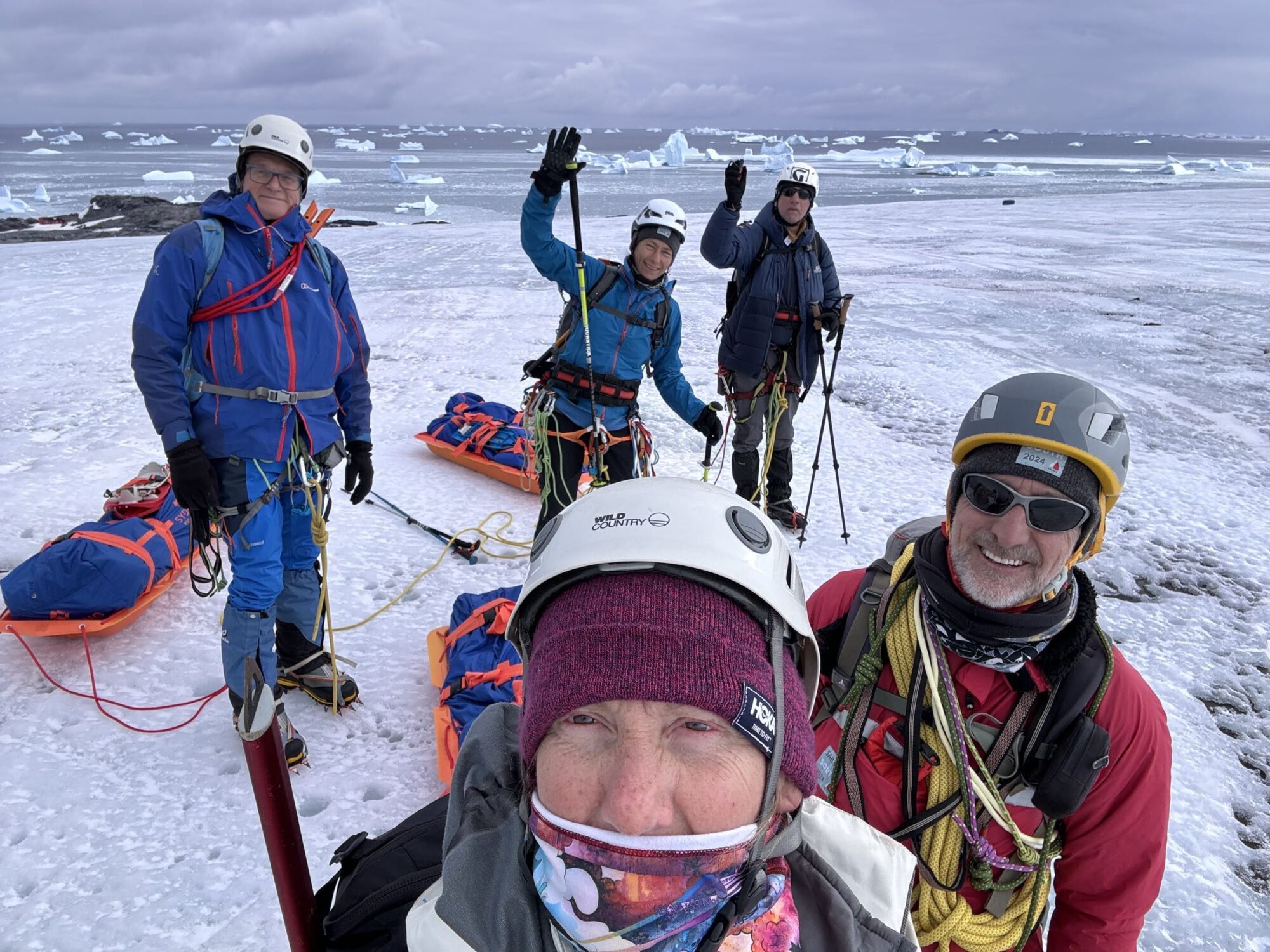On March 1st we departed early for the southern end of Adelaide Island and the Chilean Base. This base has not been used since the winter of 2014-15. We had to break a way into the anchorage due to surface ice, swells, and winds. On the way, we hit the southern most point of out journey at 67 47.700 S. Not a record by any means but a record for most of us.
While we were en route the mountain group prepared for our overnight land excursion. Due to the weather forecast and our now limited timeframe, we opted for an overnight on Adelaide Island instead of the mainland. Also, only one night instead of the 2 or 3 we had originally planned on.
We pulled out all of our gear for glacier travel, sleeping, and eating. Once anchored, we landed, found a building on base where we could stash our foul weather gear, walked past a group of Fur seals, got screamed at and dive-bombed by protective Skuas, hauled gear past a group of lounging Elephant seals, and finally strapped on our crampons and sledges.
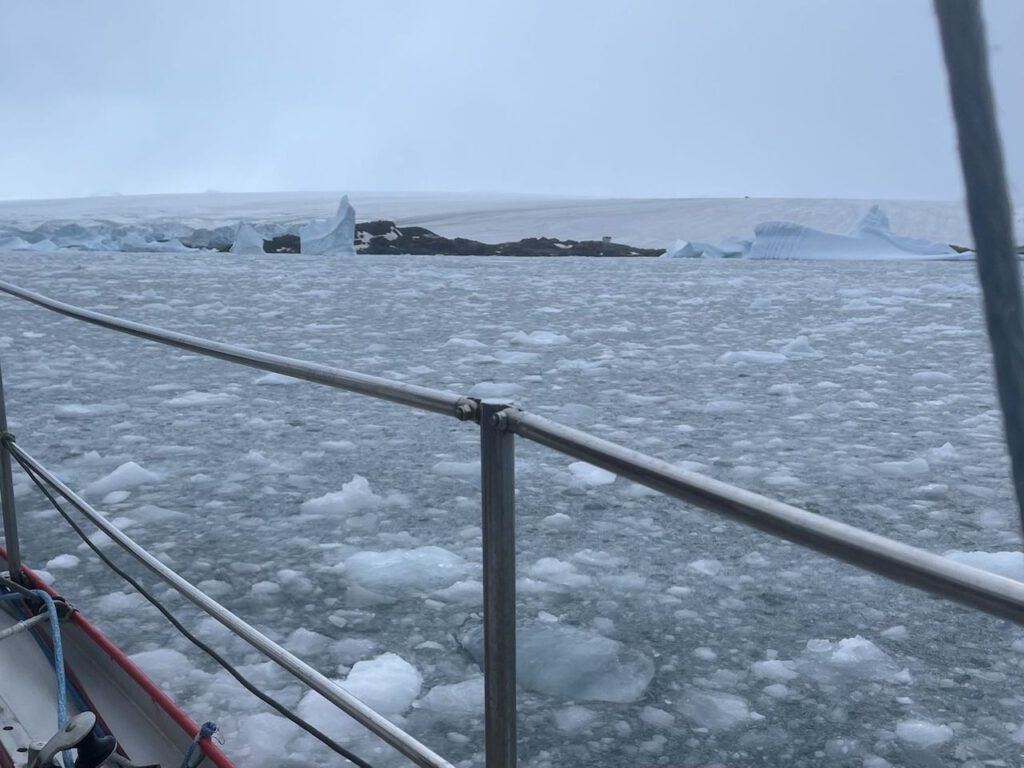
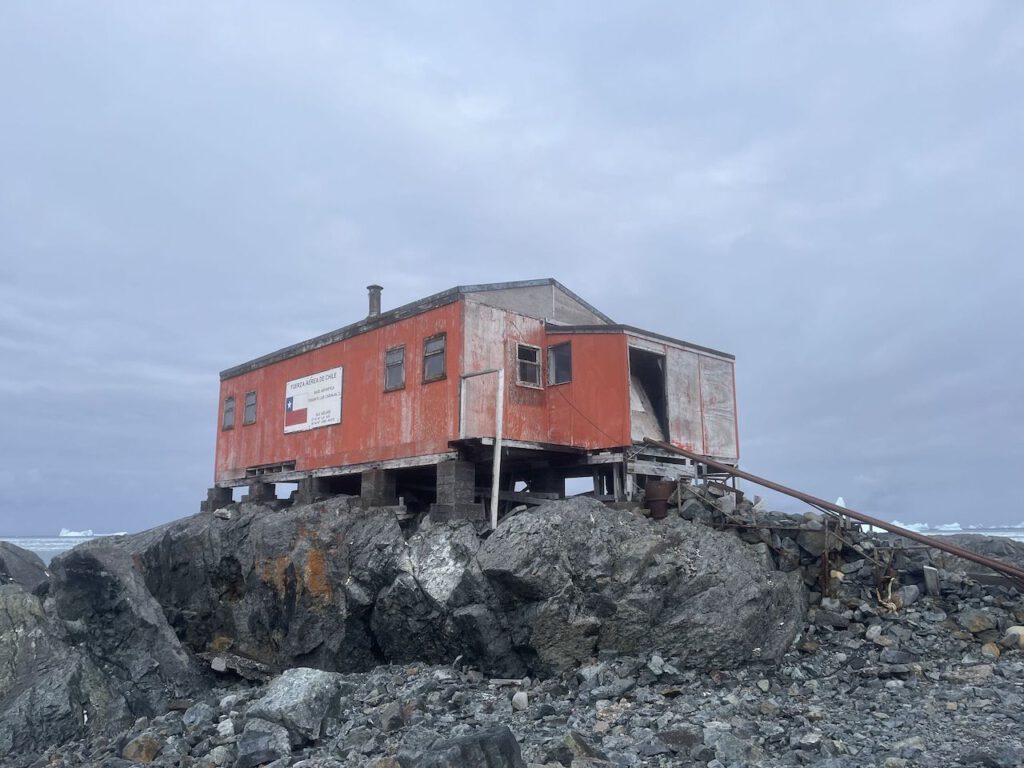
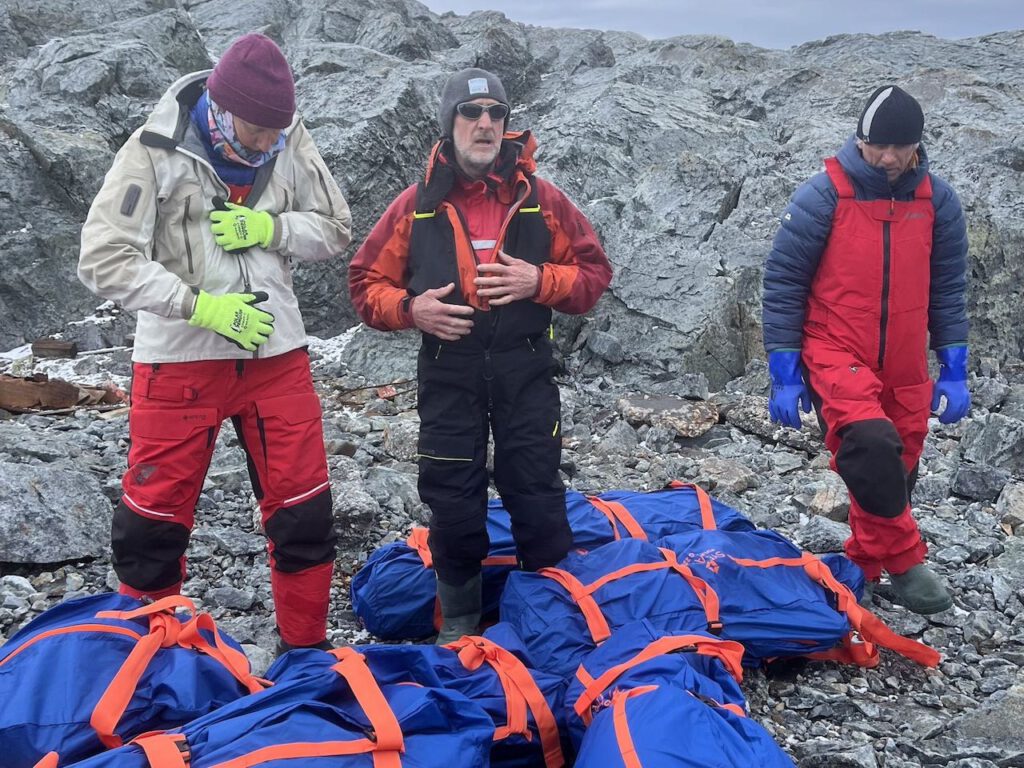
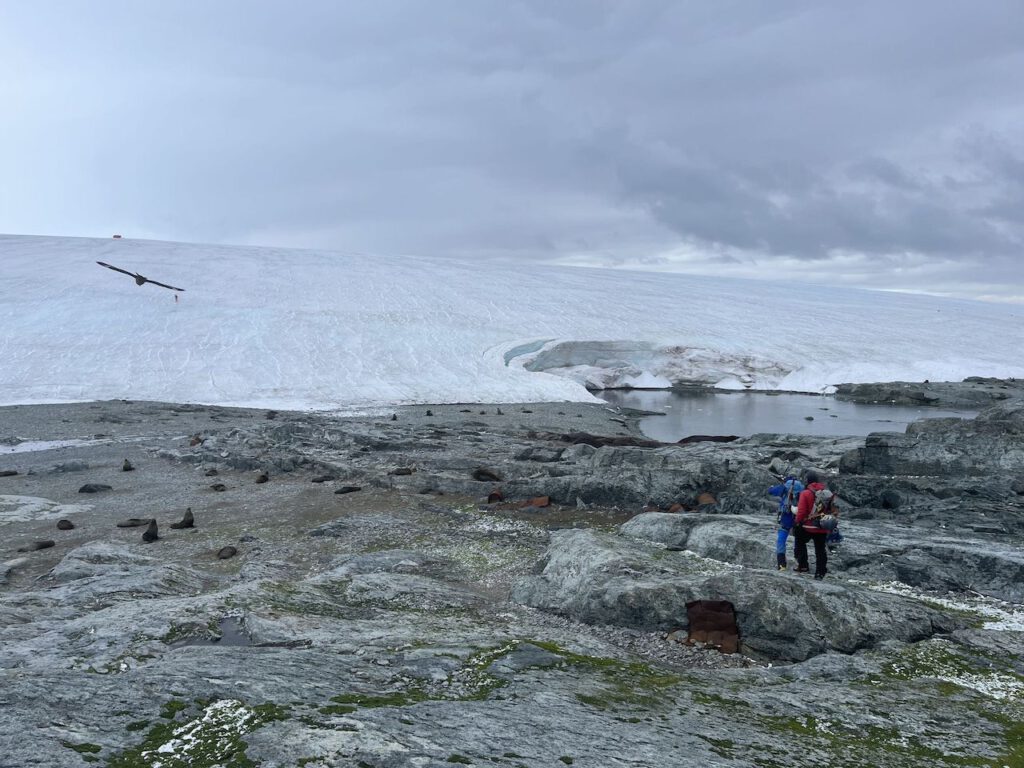


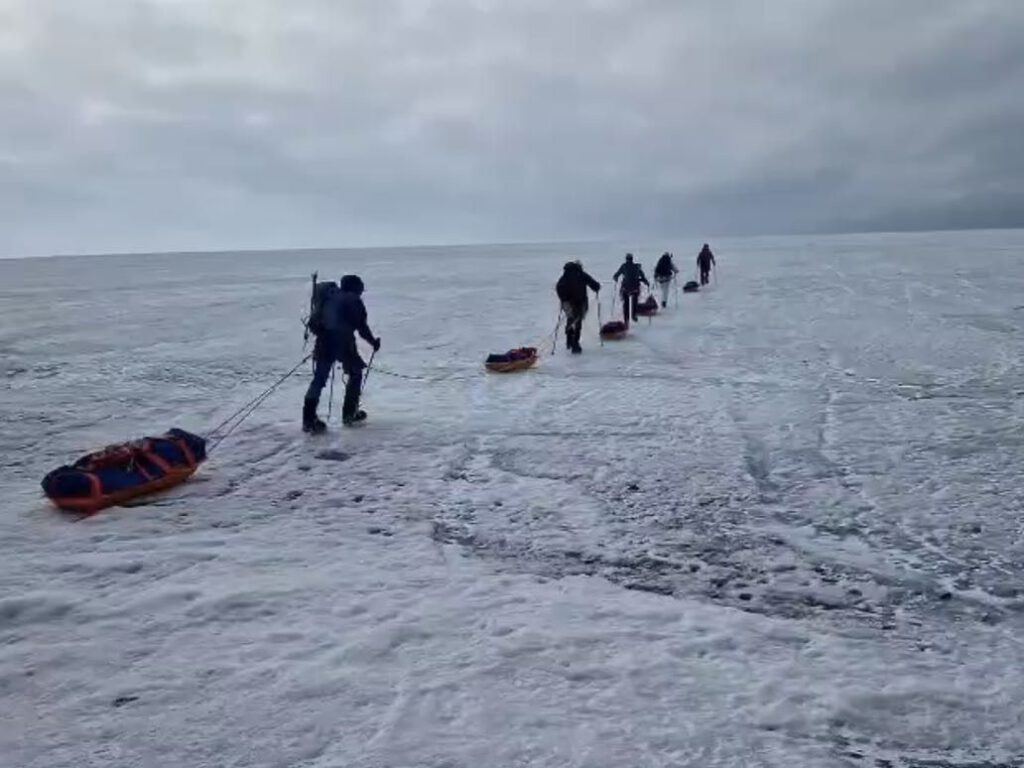
We pulled sleds over the frozen glacier stopping to see the remnants of a crashed Twin Otter and loads of empty fuel barrels. The landscape grew ever more remote as we worked our way towards a nunatak (rocky outcropping protruding from the ice field.

We had 5 people on a single rope with Alan in the lead. Being roped up is a lesson in patience and perseverance and perspective. The reason we were roped up was in defense of unseen crevasses. If one person goes in, the amount of fall is determined by how much slack is in the line between the faller and the next person. Therefore it is important to have minimal slack in the rope between people. Easy in theory but challenging in practice.
Luckily, the crevasses were not wide and when someone stepped in one (crevasses were covered by snow) we only went in to our knee. Walking the same speed, stopping when someone had to adjust their gear (usually a crampon needed to be tightened), if the person behind walking too far back would pull your harness, if they are walking too fast you trip over the rope. At time it feels like you are being pulled forwards and backwards at the same time. All this needs to be adjusted by communicating, otherwise it becomes a nagging miserable walk. Paying attention is critical at all times for the safety of the team and your own sanity!
The view grew grander the higher we climbed on the glacier. Icebergs to the south and west as far as we could see. White bergs standing out in the grey moody sea. It’s a black and white and grey world…..
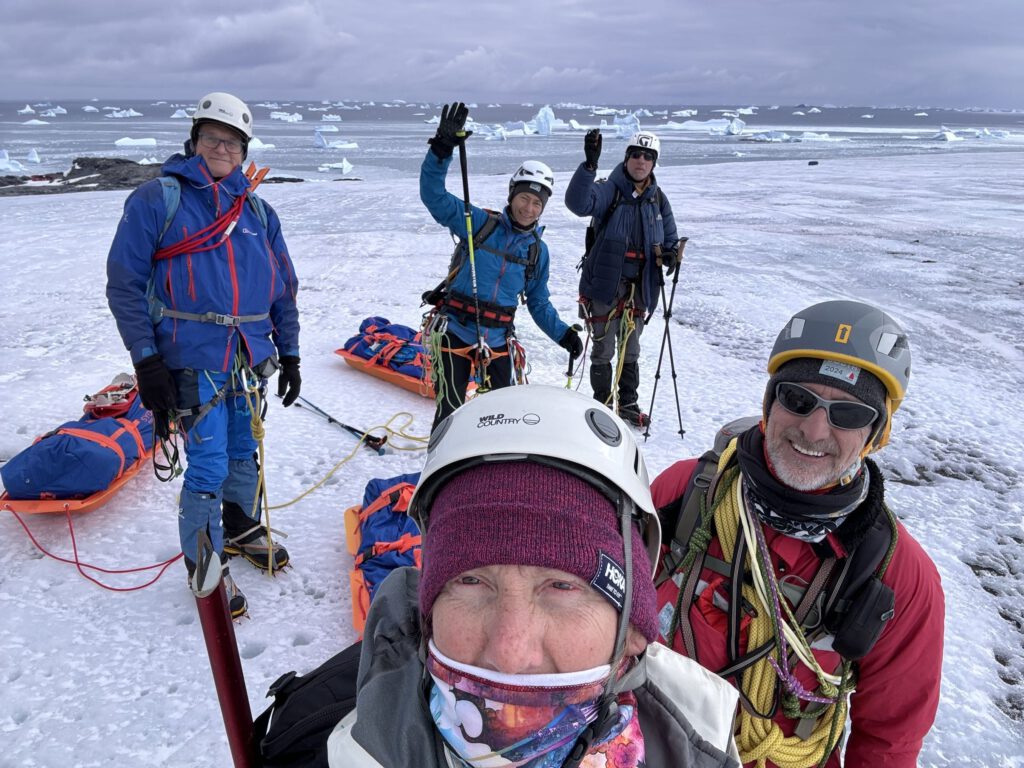
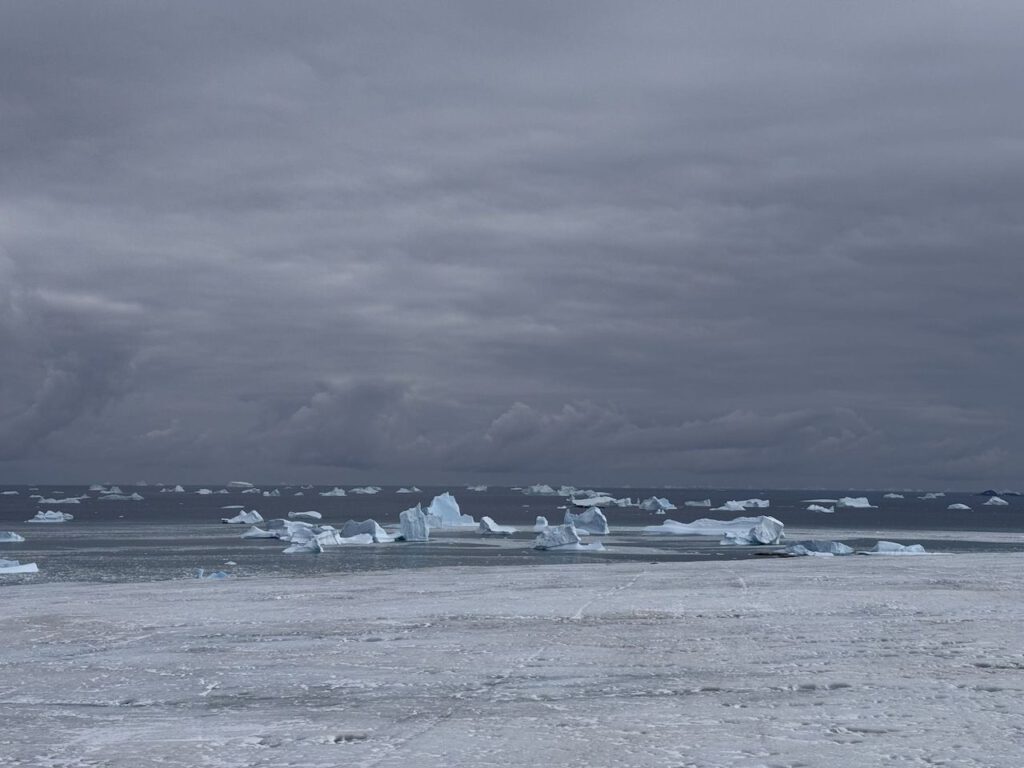
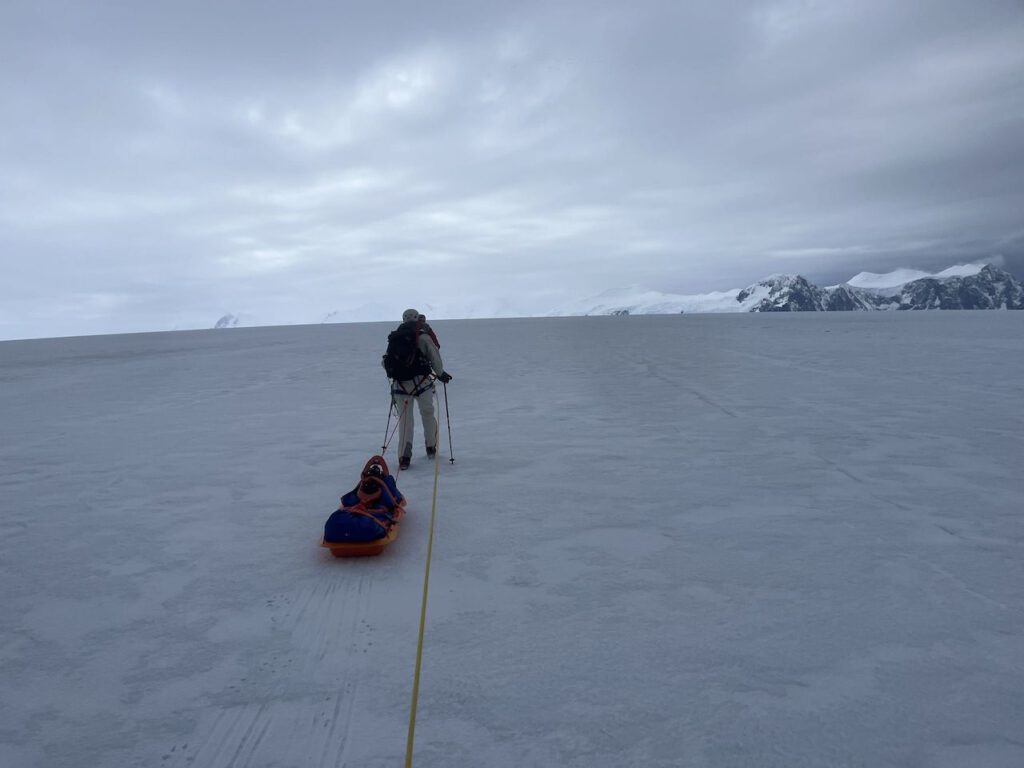
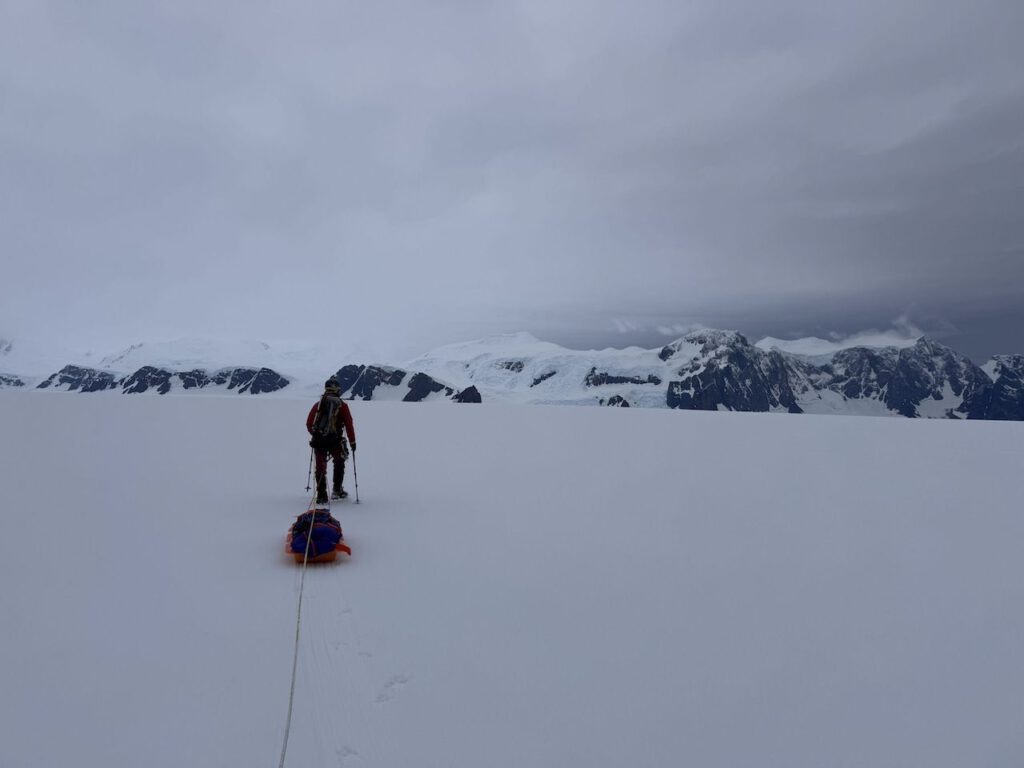

After 3.5 hours of walking we decided to make camp. Our goal had evolved over the entire trip and we were practicing maximum flexibility – we would take what was available and not try to do too much. We wanted to be remote, be free of the boat, be absorbed by the environment, enthralled with our surroundings. In that sense – we achieved our goal.
As we were setting up camp (two tents) the sky began to change. From high clouds with little wind, the clouds started to advance toward the shoreline now behind us by 5 miles. Since we were at the far end of the island, half of our view was towards the water, the other half to the mountains.
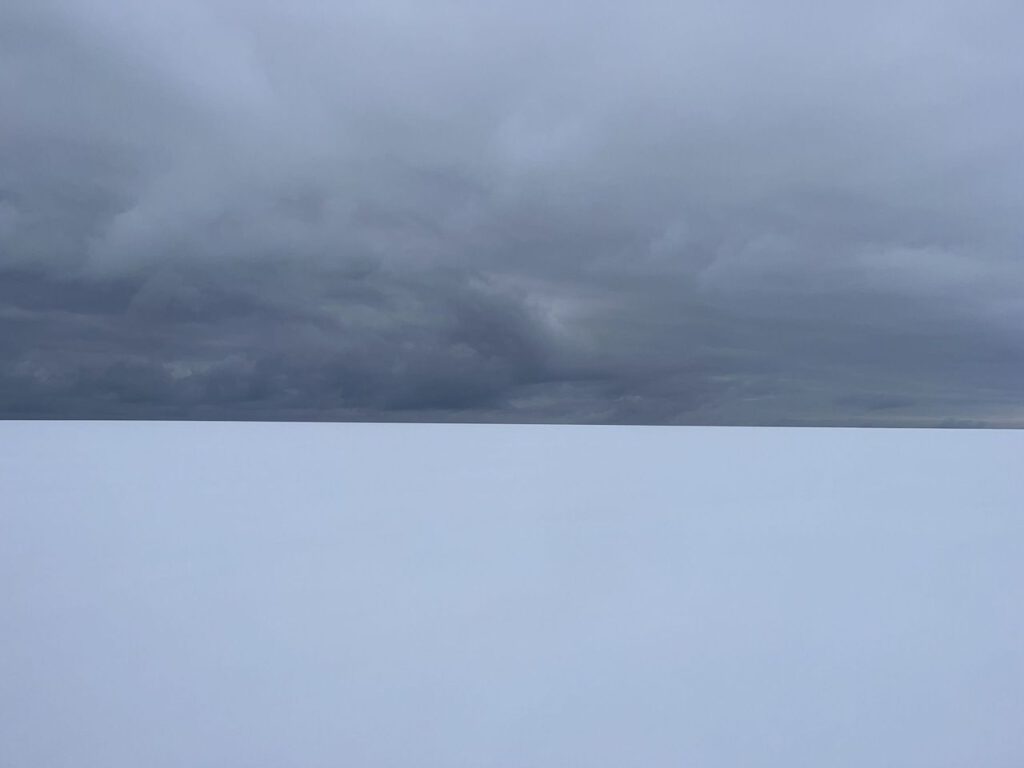
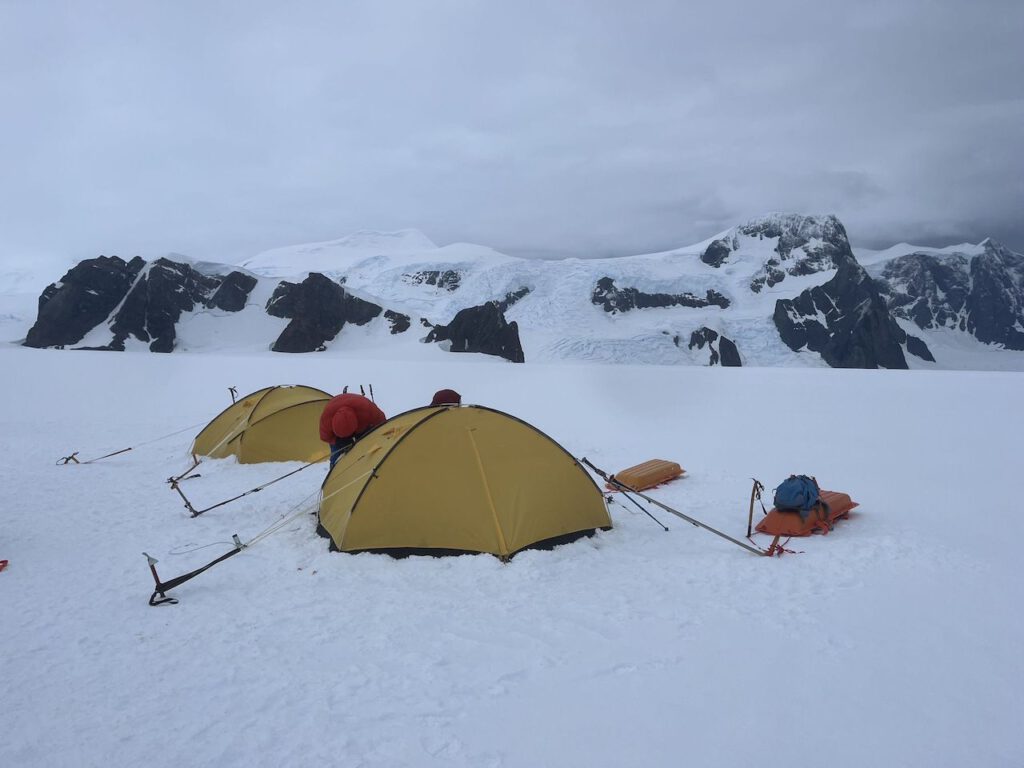
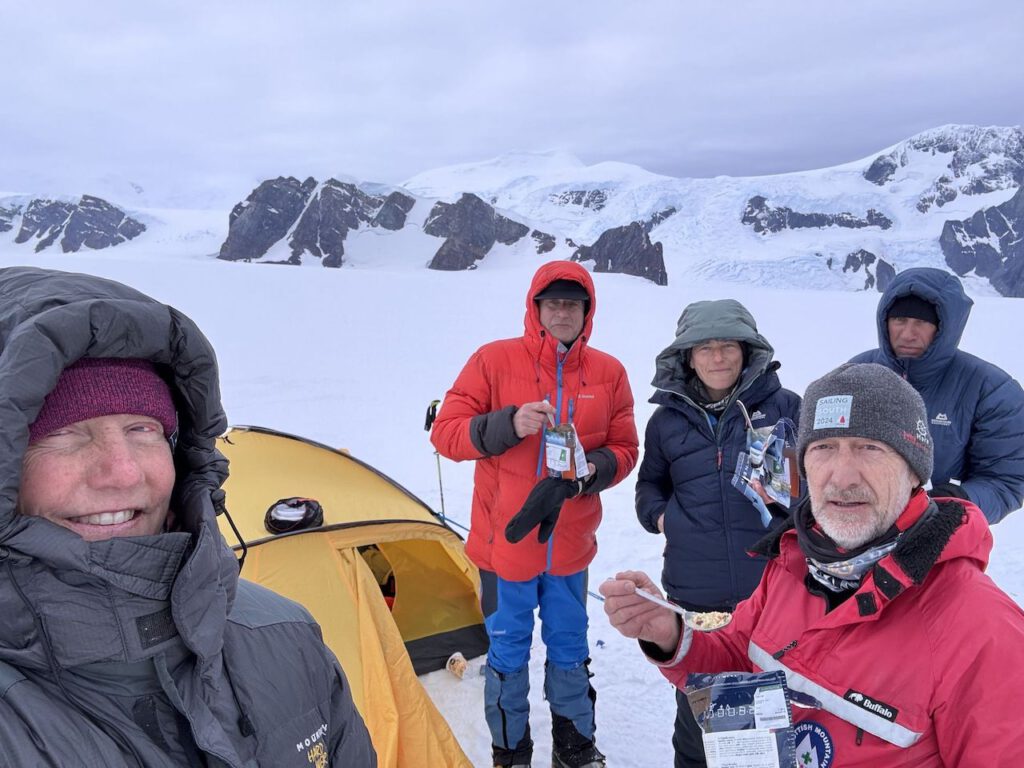
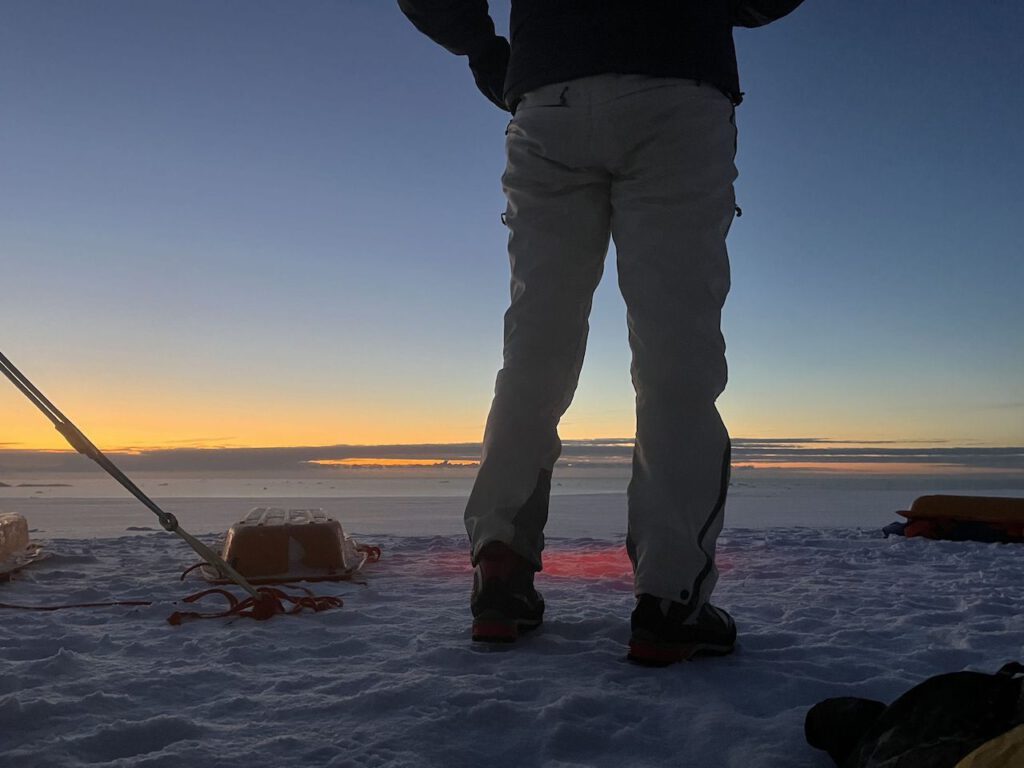
As the clouds advanced it felt as though we were being engulfed. By the time we finished dinner, our view was pure white nearly everywhere we looked. The skyline disappeared as the sky and snow became one.
We settled in for a long sleep. Light snow started falling, temperature was somewhere in the mid-20’s, cozy in our tents. Sleep eluded most of us, but Piotr (the captain) slept soundly, uninterrupted.

0400 came early and melting snow for breakfast and water for the return began immediately. We ate in our respective tents, then popped out one by one to take in the view. The sky had cleared, the water in the distance looked frozen over but was not, the mountains were crisp and clear. Sunrise would come an hour after we started back. A little easier as we were going downhill. Long shadows walked beside us.
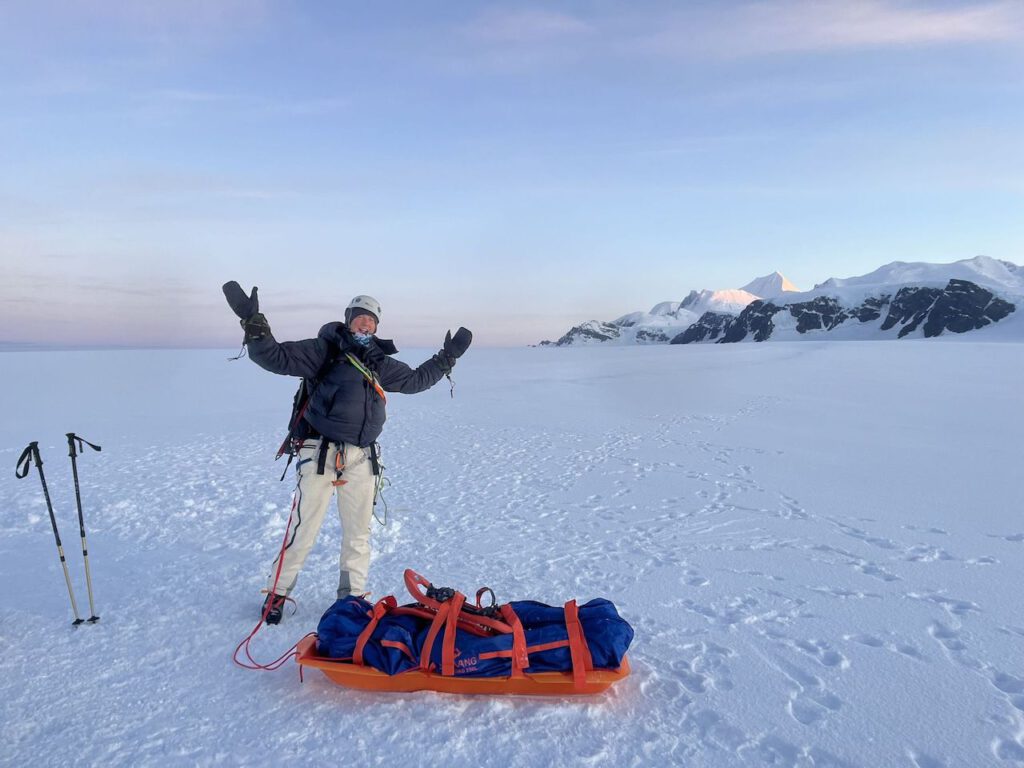
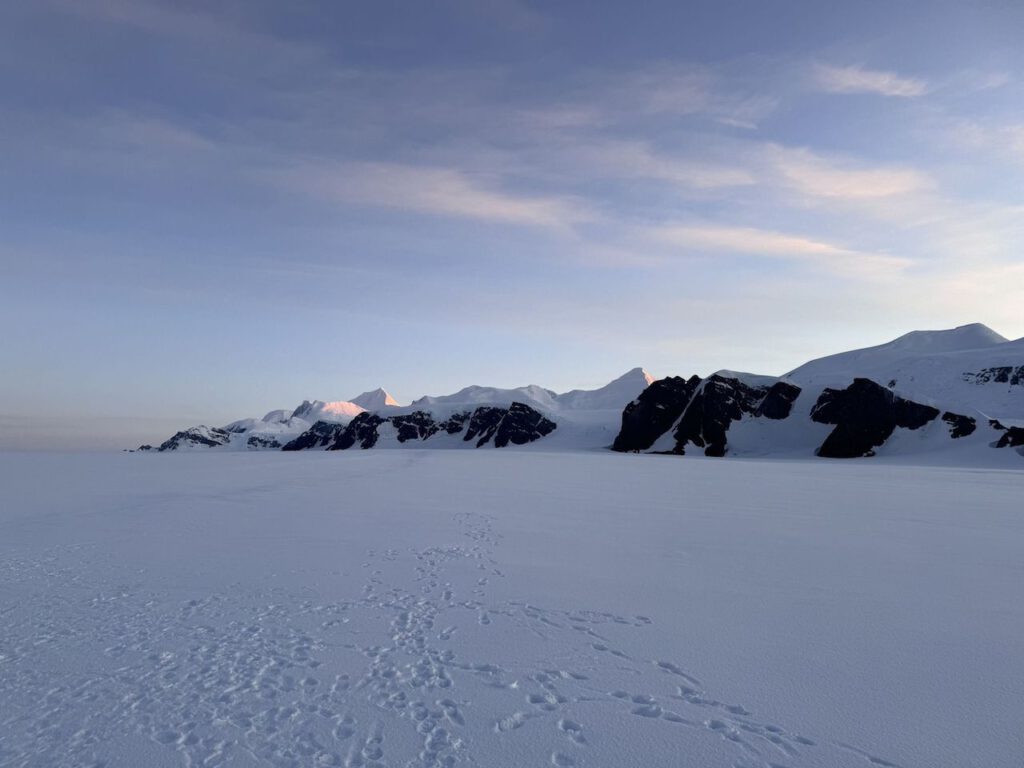

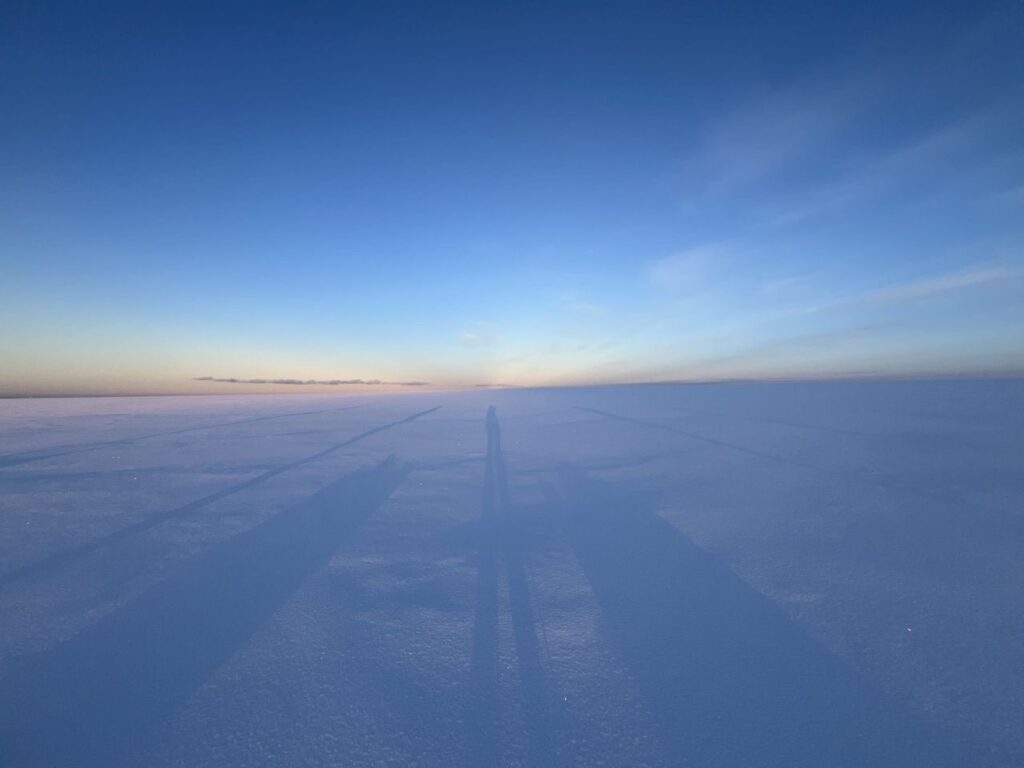

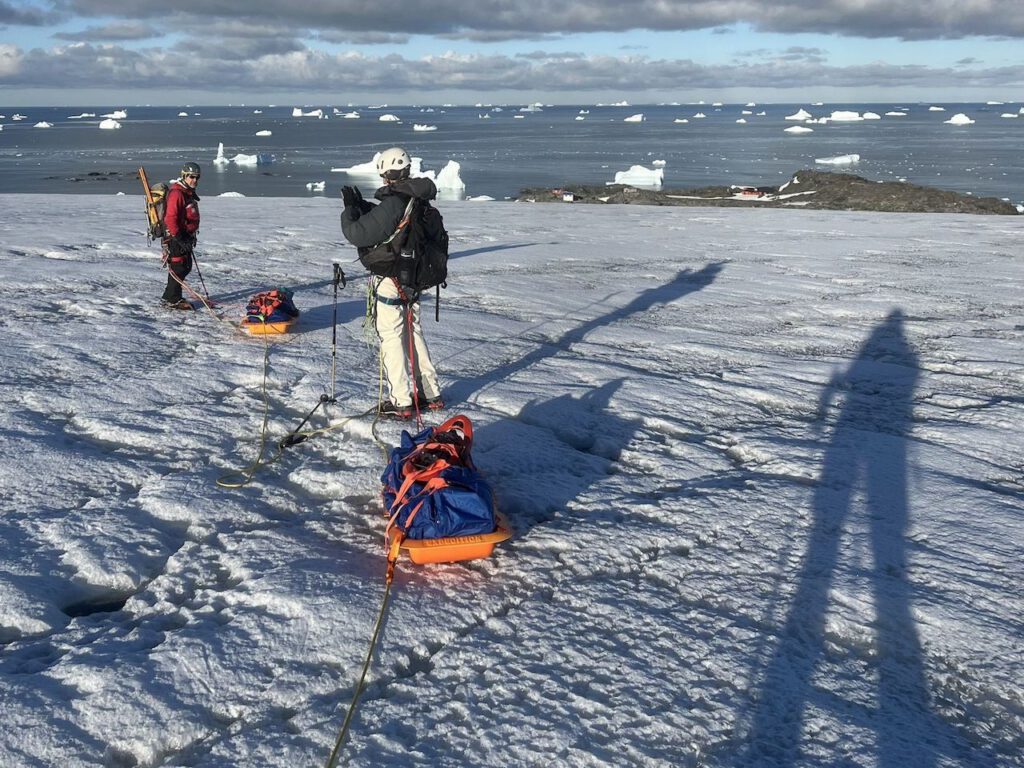


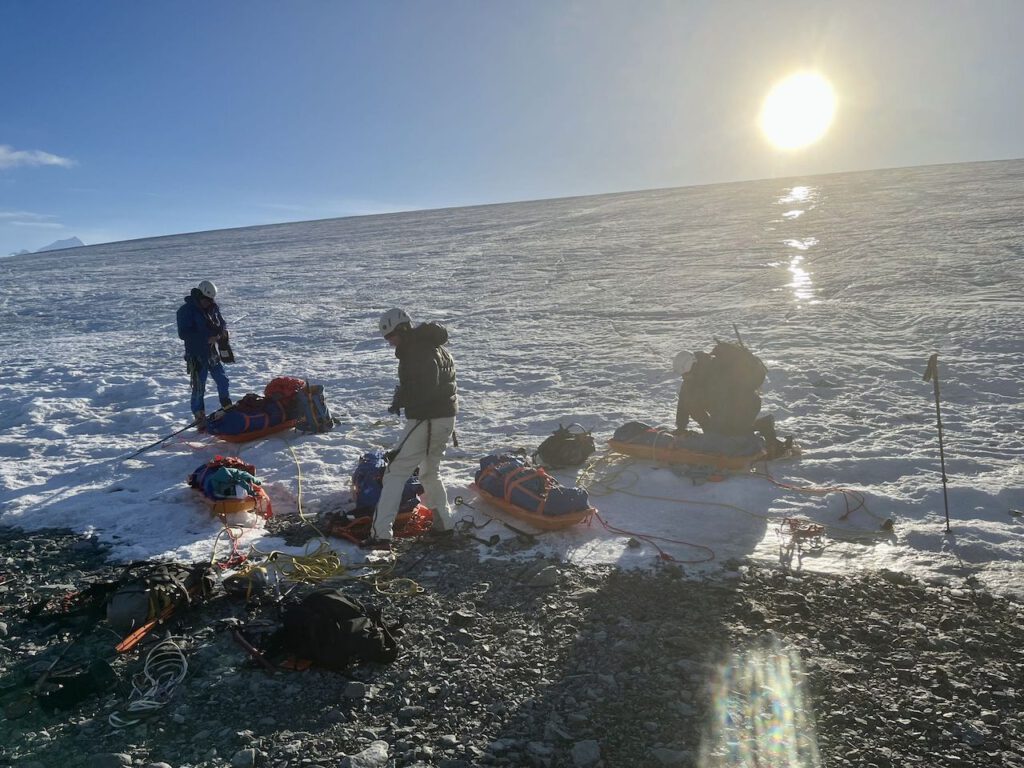

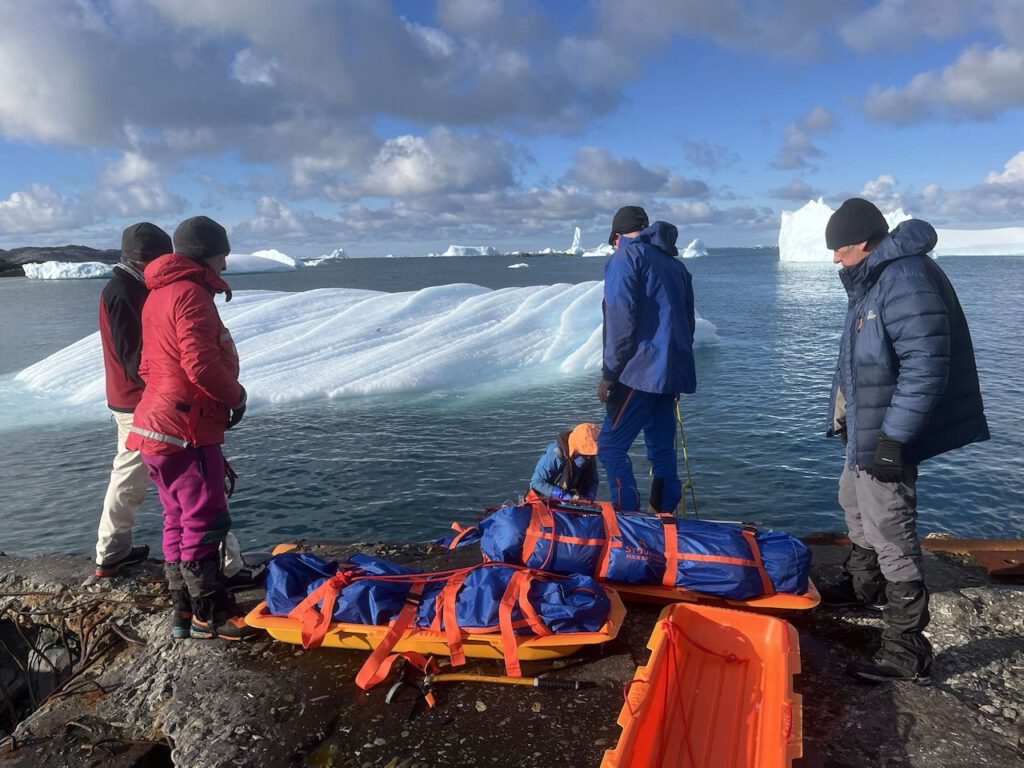
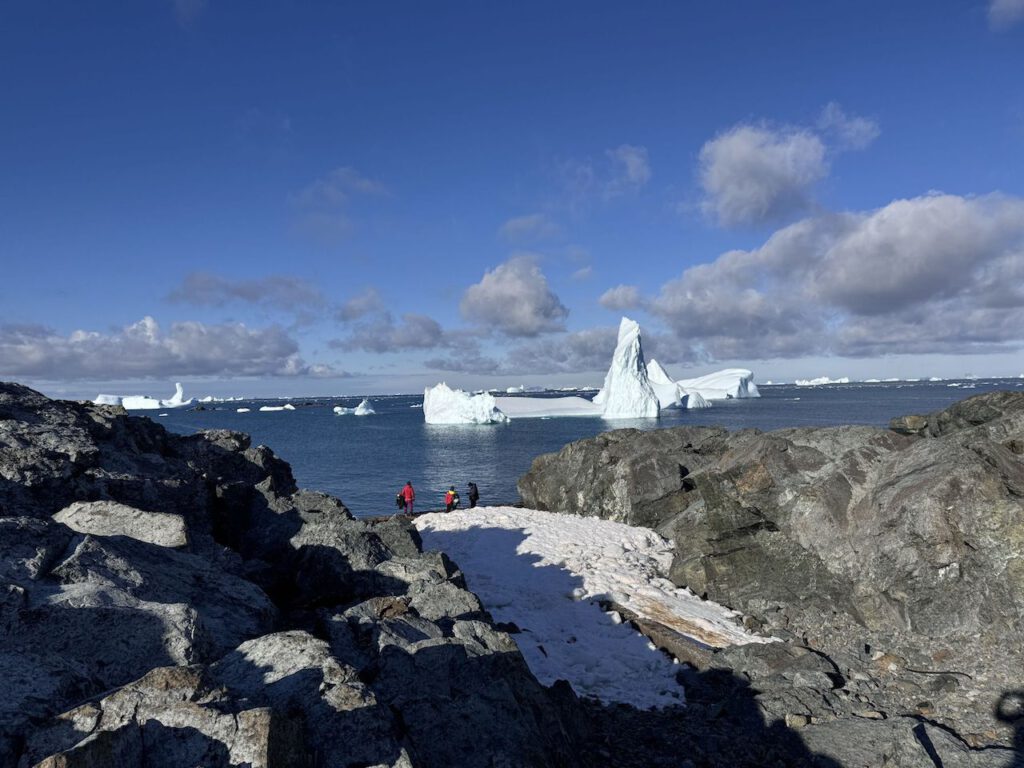
After we hauled our gear to the pickup point we spent some time looking around the base. Room for up to 32 people the base was at one time quite large. The British sold it to Chile in 2003. Now it stands as a refuge for sailors or other base personnel to use if needed (British Base Rothera is a couple hour sail away).
While the mountain group was gone, the rest of the crew and Selma anchored behind Avian islands, deflated the kayaks, relaxed, and enjoyed the time to themselves.
Once back aboard and all together, we set our course north. We motored up the east side of the island (we had considered going outside but didn’t due to forecasted weather and ice considerations). We enjoyed nice sunshine, calm waters, making our way through icy areas. We were able to see landscapes that eluded us on the way south.
Wildlife continues to be abundant with whale sightings fairly consistent every hour or so. We slowed and watched whales feeding, not too concerned with our presence but not getting too close either. Seals on flows- Weddels, Fur, Leopard and now Crabeaters. Antarctic Terns, Skuas, Dominican Gulls, cormorants all take to the skies and float on the sea.
We pressed on overnight, using the ice light, picking our way through channels nearly choked with icebergs. Pancake ice becomes a daily occurrence, temperatures are staying closer to freezing. Same area different scenery.
